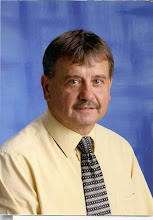Newton, while observing Halley’s comet noticed that the force of the sun on the comet diminished as the comet got further away. Newton discovered that the comet was moving in an ellipse as a consequence of the inverse square law. After the apple incident, Newton realized that everything in the universe falls under the inverse square law. Newton also noticed that the mathematics of his time were too primitive to solve the law, he created calculus to help determine the motion of falling objects, including the moon.
Newton’s Mathematical Principles of Natural Philosophy or, Principia, described the rules of mechanics such as the inverse square law, and it raised paradoxes about the construction of the universe. After Newton’s work had been published, there were arguments debating the size of the universe and whether or not it was finite. In 1962, Richard Bentley wrote a letter to Newton concerning the finiteness of the universe. Bentley noted that since gravity was always attractive, and if the universe was finite, all the stars would collide into a fiery superstar. He also wrote that if the universe was infinite, any force tugging on the star would be infinite as well resulting in all the stars being ripped to shreds.
Newton responded saying that he preferred an infinite universe, but the force pulling the star to the right would be cancelled by the force pulling it to the left leaving us with a static infinite universe.
Since the universe is infinite, there should be an infinite number of stars glowing white, and therefore the n
 ight sky should be white. Edgar Allen Poe, a famous poet wrote that “… that there could be absolutely no point … at which would not exist a star.” He concluded that even though there is never a point in the universe where a star doesn’t exist, that the distance between us and this invisible background is so immense that the light from these stars still has not hit our eyes.
ight sky should be white. Edgar Allen Poe, a famous poet wrote that “… that there could be absolutely no point … at which would not exist a star.” He concluded that even though there is never a point in the universe where a star doesn’t exist, that the distance between us and this invisible background is so immense that the light from these stars still has not hit our eyes.With this new idea from Poe, astronomers programmed the Hubble space telescope to take a picture of the farthest point in the universe. This photograph showed ten thousand infant galaxies 13 billion light-years from Earth. When studied, scientists noticed that there is only blackness between the galaxies and this is what causes our night sky to be black. However, they soon discovered that the blackness was actually microwave radiation from the big-bang itself. So, if we could somehow see microwave radiation in colour, our night sky would not be black at all, but the colour of microwave radiation.
Below is a time line of the creation of our universe.




